|
John Sebastian led the world's most loved goodtime music band in the '60s. Influenced by jug band music, folk music, and rock'n'roll, the Lovin' Spoonful fed us music that was flavor rich and unique, and no other band came close to the sounds that they created. John Sebastian's songwriting and performing career, both solo and with the Lovin' Spoonful, has taken his music to concert halls, movies and television. These days, John Sebastian's J-Band continues the tradition of jug band, folk, blues, and a lot of goodtime music.
the JOHN
SEBASTIAN
interview Q: John, I've always considered myself kind of a guitar-savvy person, but I have to admit that until I started seeing your solo show years ago, I didn't really know for sure what a baritone guitar was. I was fascinated to watch and to listen to you tell stories about it. How did you get started with the electric baritone guitar? JOHN: Well, there is a track on one of the Spoonful albums, "Jug Band Music," and in the recording of "Jug Band Music," we used six-string basses to get this "blatty" sound, but because of the key, we ended up capoing it to the fifth fret, and that became a kind of a start to this baritone thing. I had begun to say "Gee, this instrument becomes useful like this," and so, it became an instrument, particularly, that I ended up using later, as you pointed out, during my solo career, 'cause it's the kind of thing where you can sound bigger than one person with one instrument. That's how that thing got started, and over the years, I've been experimenting pretty steadily with different brands, configurations, combinations; for a long time I was simply using six-string basses that I would tune A to A, and I had the help of Tom Vinci of Vinci Strings very early on, to get what was sort of my point of departure gauges, and so this was, at this point about an .016 to .080 kind of thing. Tom Vinci is a string maker and he had also been a guitar builder, in fact, he was an apprentice to a man by the name of Frank Favilla, who wasn't Ed Favilla who did Favilla guitars, but he was his brother. Q: And I've seen you a number of times with this kind of green, Gumby-ish looking guitar. Was that a custom-made guitar? JOHN: Okay, so yeah, it was custom made in the sense that I was hanging around every minute while it was being made. During the late seventies, early eighties, there was a guitar company here in Kingston (NY), Veillette-Citron, and that's Harvey Citron and Joe Veillette, who are still building guitars individually. They were very helpful. . . . I came to them and said, "Okay, the problem with six-string basses is that they have too skinny a neck to be able to fingerpick, and I want to be able to fingerpick this big thing." And so for many years I had that Gumby-kind of baritone . . . what it really is based on is a Guild Thunderbird. Q: I thought it looked familiar. JOHN: Yeah, and the Guild Thunderbird has ancestry in the Spoonful and I think that was one of the reasons why I encouraged them on that style. They wanted to do a baritone, and they said, "Well, I don't know . . . what shape?" You know, here are all these Les Pauls and all these Strats and everything, and I said, "Well, if we're going to go for something older, let's use the Guild Thunderbird, just because it looks different." Q: I think that was a great choice. JOHN: So that became the template for that body, the VC Shark, as it was called, what I was using for, I'd say . . . eight years. And then, after that, there was a guy named Chuck Lindert, who makes a wonderfully kind of goofy-lookin' guitar. I was attracted to the look as it related to jug bands and ended up doing a NAMM show and gettin' a guitar, and that became kind of a main instrument for a couple of years; and then Joe Veillette designed a baritone neck that fit on a Telecaster perfectly: The idea being change your spare Tele to a baritone in one easy move. And so that became another baritone guitar that was really what I was using and continue to use. That neck and the people that build that neck, WD Music Products--they are a parts company, among other things, as well as making complete instruments--and they have a real nice shop. They do a really good job, and, so I've gotten two baritones from them and they are B to B instruments, and not A to A. And that's sort of where I've settled, lately. Q: Have you tried those new Danelectro baritones that have been reissued? JOHN: I have, yes. Yeah, they're lots of fun; they are the old scale, so it's really a foreshortened E to E scale which works well at A to A, but starts to get "thin" sounding at B to B. Q: There is a new John Sebastian songbook from Hal Leonard, and the cover shot shows you playing a wild-looking acoustic guitar. What is that? JOHN: Okay, that was made by Alvarez-Yairi, in conjunction with Joe Veillette and Michael Tobias. Tobias is also a Woodstock builder; he's in my neighborhood. So this was a design idea that they were just trying at Alvarez-Yairi, and I was trying those out. They didn't end up making them, so they are relatively impossible to find. What it is, is a six-string baritone acoustic. Q: You also use a Deering six-string banjo. I guess it's easier just to play guitar on a banjo than just to learn how to play banjo?
Q: Yeah, I guess it would be a better strumming-type instrument, almost like a combination between a five-string and four-string banjo. JOHN: Yeah! Q: Neat. Do you use the Deering B6 or D6, or is it a custom-made six-string banjo? JOHN: The six-string banjo I've got from them is a maple instrument that has a John Hartford-type tone ring. Q: John, it seems like you have this affection for musical instruments that are out of the norm: The six-string banjo, the baritone guitar. . . . JOHN: Well, the various needs that I was coming up with were maybe a little bit unusual for the mainstream, but, you know, they made sense for me. For example, the baritone guitar in a rock 'n' roll ensemble gets in the way of both the guitar player and the bass player, so it is not the kind of thing that is going to find favor immediately in a standard configuration, but on the other hand, then there is this entire new generation of guitarists who are quite likely to use these lower tunings--this whole scene of metal guys with baritone guitars. I'm seeing and hearing lots of B to B instruments, and everybody isn't, you know, using them . . . a lot of these guys are trying to do it on conventional guitars, although that has its own sound, and maybe its okay. Q: May be. Whatever works. Usually there are no rules. JOHN: That's right, that's right. Q: You're always credited as playing the Hohner Meisterklasse harmonica. How is that different from, you know, the Marine Bands, Blues Harps, Lee Oskars, all those? JOHN: They are about three times as expensive. . . . And, what they are is a very solid instrument. I get about a year out of them, or a year plus in many cases, and I favor them over the Marine Bands, just because Marine Bands went downhill again. Q: Do you do your own tweaking on your harp, or do you leave that for Hohner? JOHN: I leave that for Hohner, yes. I'm not a very good harp tweaker. Q: I've always thought there is a reason why there are professionals for everything, you know? JOHN: Yeah! Q: My buddy Ed Surowitz over at Allegro Music (Kingston, NY) tells me that you recently picked up a Roland Jazz Chorus from him. Is that your amp of choice all the time? JOHN: You know what it is, is that it is an amp that can be readily found, you know, if you were gonna choose, and it does have qualities that I like. Q: Roger McGuinn uses a Roland Jazz Chorus all the time. I've never seen him without one. JOHN: Yeah; I showed him that. Q: Did you! JOHN: I did. Q: So, here's John Sebastian's million dollar question, almost like being on one of those TV shows, and there's only one right answer for this one, and if you have the right answer, then I guess you've already won. The question is: There have been quite a few of your tunes used, in recent years, for a number of national television ads, as well as some movie use. Please tell me that you still own all of your material. JOHN: To the extent that '60s guys own things, yes . . . but I don't have the publishing, just like most '60s guys, and that was an error, you know . . . part ownership in publishing was the kind of era that started a little bit later, when real businessmen started to manage artists. Laura Nyro was one of the first people I think, who had a really good deal on that. So there's your answer: Partially. Q: Okay. Well that's a much better answer than a lot of artists would have, so good for you. I know you've done a lot of cartoon music in the past. Got anything like that going on now? JOHN: Not currently, but, matter of fact, I've just been talking to the guys who do that animation a little bit more than usual, just lately, but it . . . it's mainly just kinda checking in with each other . . . we all had a very good time doing all that stuff, and we stay in touch. Q: Is the J-Band touring this summer? JOHN: Yes it is. We just finished a nice week in the upper mid-west, and, I'm actually going out for a few solo shows in Scandinavia, but that's mainly because I can't bring the band because of financial concerns. Q: We've had Paul Rishell and Annie Raines (from the J-Band) up here in Montpelier (VT), doing guitar and harmonica workshops, and Paul told me this great story about how you tried to track down who they were and find them?
Q: Whoa! That's pretty good! JOHN: He picked up the phone! Yeah, it was great! And, oh boy, we were really lookin' at that point for a guitar player because Vivino (Jimmy Vivino) had gotten the Conan O'Brien job at that point. This band's been together a long time. We looked around and realized that we had technically been together for ten years, and so Vivino got the Conan job and we were . . . we were really out on a limb, and then heard of Paul and Annie, and we got that together. Q: Speaking of your wife, Catherine has always been credited with all of your best photos throughout the years; does she do other professional photography, or is it because she's your biggest fan? JOHN: No, no. She does that for a living, and that's why it's so good. I'm just the lucky recipient. Q: Right guy in the right place at the right time? JOHN: That's right. Q: John, some of your old band mates--Joe Butler, Steve Boone, and Jerry Yester--have been touring under the Lovin' Spoonful name for quite a few years. You hear a lot about different bands' situations where there has been conflict about the use of a name. Was that ever an issue with you guys either personally or legally? JOHN: No, no. It wasn't a conflict. I left the band. I was happy to leave the name behind and reap the benefits of it and so I couldn't turn around rightfully and say, "well, that's mine, too." Q: Have you ever done any guest appearances with them? JOHN: No. Q: Do you keep in contact with those guys at all? JOHN: Mostly Zally (Zal Yanovsky). Q: I ate at Chez Piggy once. (Zal Yanovsky owns a very popular restaurant in Kingston, Ontario, Canada.) JOHN: Great food, right? Q: Yeah, it's fantastic! The reason I found out about it was that I saw you around 1984 at a show in Middlebury, Vermont. People were yelling questions out to you, left and right, and somebody asked you about Zally and you mentioned Chez Piggy. I put it in the back of my mind, and showed up there one day for lunch, on my way back from Toronto. JOHN: Wow, that's great! Well, I'm glad you got to eat there, because I try to explain to people how cool it is. . . . You know, they think he's in this sad little hamburger stand somewhere, and I say, no, no . . . you don't get it. . . . Q: I saw a web site from Finland with a number of photos of you playing . . . and you had Zally with you in the J-Band. JOHN: Yes, that's right. Zally came along on one of the J-Band runs as the guitarist. Q: Wow! That must have been fun for you.
Q: When was that? JOHN: It was three summers ago. Q: So, the Spoonful was inducted into the Rock and Roll Hall of Fame, in early 2000. Did they have some kind of ceremony for that? JOHN: In New York, yes. Q: Did the whole band turn up for that? JOHN: Yes, but they didn't honor Yester; I guess he was not in time for what they were doing. Q: One of the things that occurs to me when I think about any of the major bands through the '60s, is that almost everyone ended up having other bands trying to sound like them. Maybe I've overlooked something, but I can't think of any band that ever came out sounding anything like the Spoonful. Why do you think that is? JOHN: Well, you know, the Spoonful was kind of an unusual situation. We were a group of guys who had had experience as rock 'n' rollers, and as folk musicians and as folk-music accompanists . . . particularly, Zally, and I had done that job for, you know, a lot of different people. And it was a band that had two fingerpickers in it. Two guys that played with thumb picks. There were a lot of little oddities that just didn't get repeated again, because rock 'n' roll moved on, and, you know, I think the accentuation went to the "rock" rather than to the "roll," and, I think, probably, we were more heavily into the "roll" part of it. Q: There's a new "Lovin' Spoonful Greatest Hits" CD that came out this year, around the time of the Rock and Roll Hall of Fame Award, and it was the first CD that was actually re-mastered of the old Spoonful material. Were you involved in a song-selection process or any of the workings of it, at all? JOHN: Yes, a little bit. They asked me to come in and listen to some tapes, and for a couple of days we just spent time trying to uncover the most original masters that we had, and it was really an interesting process. Q: So you were quite pleased with the results? JOHN: I am very pleased with that re-issue. Things really have changed for the Spoonful re-issues. There was a time when you would find these things that said, you know, "The Lovin' Spoonful" and they'd have a picture of some lascivious-looking girl licking a lollipop. I mean, we've been really used and abused from our earlier record companies, so it's very nice to have a situation now. You know, what happened was that RCA bought out Kama Sutra, and then BMG bought RCA, and so it suddenly put us on a big label. And the difference is enormous because big labels . . . they can't hide as much as some of the little bitty labels.
JOHN: No, I didn't. I got to hear it before it got released, but I wasn't involved in the making of it or anything. Q: He did a nice job on it. JOHN: I think he did. Q: We mentioned the new Hal Leonard "John Sebastian Songbook" (HL306218) that has recently been published, and we were talking about the guitar on the front of it at the time, but we should talk about the contents of it. That's something you also had a lot to do with. JOHN: And I had a long wait between having a songbook out. They used some parts of a very old songbook where I did a lot of kind of commenting on each song. Q: Do you ever do any harmonica or songwriting workshops? JOHN: Well, I did a harmonica instruction tape for Homespun tapes. Q: I've got one more question, John. This is a fantasy question: If the music police came to your house and checked your personal collection of CDs, records and tapes, is there anything that they'd be really surprised to find in John Sebastian's music collection? JOHN: Gee, I have a pretty, you know, wide appetite. Geez, I wish I could tell you I had a whole bunch of '80s hair bands, you know something you really wouldn't expect, but I don't know that the music police would be that surprised, because most of the stuff that I am influenced by is in evidence in the music. Q: Actually, that does remind me of a CD that I've got, that I don't think I've seen listed in your discography. It's a Timothy Leary CD called "You Can Be Anyone This Time Around." JOHN: (laughs) Yeah!!! Q: Even though it was the '60s, you do remember that one, huh? JOHN: (laughs) Absolutely!!! Yeah, Stephen and Jimi (Stephen Stills, Jimi Hendrix) called me up. They were right around the corner at Electric Ladyland; they wanted another guitar player, and I went in and played while they were fooling around. It certainly isn't a record that . . . you know, it was just a little bit of fun. Q: Well, it's certainly an interest feature of some form. The CD lists you as playing lead, and Hendrix playing bass? JOHN: Yeah . . . crazy, huh??!! Q: Hey, you know, anything works: There're no rules. JOHN: Yeah, I think that that might be the case . . . although . . . Stephen does some of the lead. I think Stephen plays lead on a bunch of that. But, you know, as I say, it was kind of a nice underachiever night!!! We were just having fun. Q: John, it has been a pleasure talking with you, and I really appreciate your time today. And, hey! Keep doing what you're doing! JOHN: Well, thanks.
For more information about John Sebastian, go to www.johnbsebastian.com for tour dates, discography, photos, and news.
Copyright © 2000 Stable Management Corporation...All Rights Reserved |
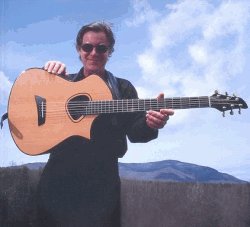

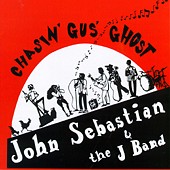 JOHN:
Yes, and then
also, styles that we are doing in the jug band, in the J-Band, . . .
really do sound better with a six-string banjo. The banjo can have more of
an "anchoring" job.
JOHN:
Yes, and then
also, styles that we are doing in the jug band, in the J-Band, . . .
really do sound better with a six-string banjo. The banjo can have more of
an "anchoring" job.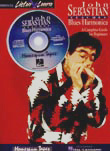 JOHN: Yes, it was really comical,
because we had a cassette tape in our van that had been given to our road
manager without much more than a name, and thank God my wife is so
logical! She said, "Well, so he's this amazing blues guy, right? Well, he
probably lives in Cambridge. Why don't you just try Cambridge
(Massachusetts)?" And I did. I tried Cambridge information. I hit him
first call.
JOHN: Yes, it was really comical,
because we had a cassette tape in our van that had been given to our road
manager without much more than a name, and thank God my wife is so
logical! She said, "Well, so he's this amazing blues guy, right? Well, he
probably lives in Cambridge. Why don't you just try Cambridge
(Massachusetts)?" And I did. I tried Cambridge information. I hit him
first call.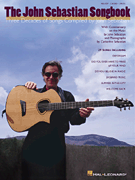 JOHN:
Oh, lovely
fun!
JOHN:
Oh, lovely
fun!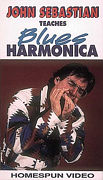 Q: I
was really pleased to see "Darlin' Be Home Soon," sung by Jules Shear,
appear on the Bleaker Street Collection. Did you have anything to do with
that?
Q: I
was really pleased to see "Darlin' Be Home Soon," sung by Jules Shear,
appear on the Bleaker Street Collection. Did you have anything to do with
that?